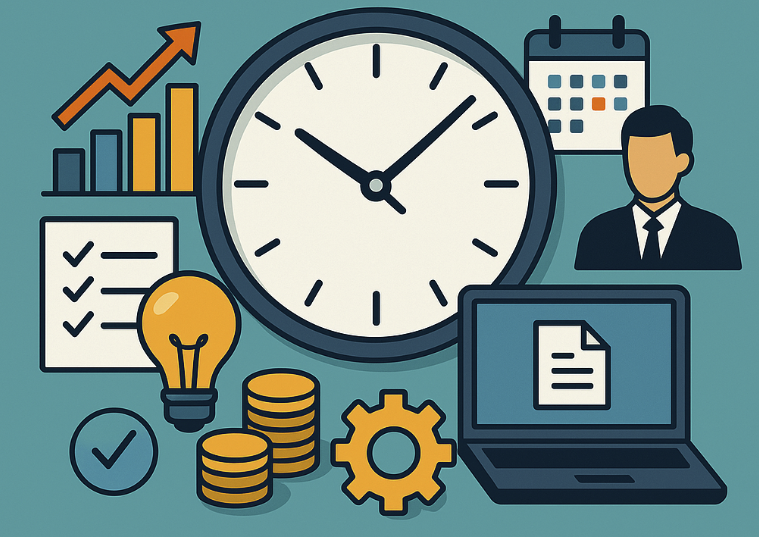With the advent of 5G technology, there has been a lot of buzz surrounding its capabilities and how it compares to its predecessor, 4G.
As the fifth generation of wireless technology, 5G promises faster speeds, lower latency, and the ability to connect more devices simultaneously.
But how much of a difference does it really make?
5G vs. 4G: How Much of a Difference Does it Make?
5G:
- Speed: Significantly faster data speeds, potentially up to 10 Gbps.
- Latency: Extremely low latency, as low as 1 millisecond.
- Capacity: Can support a larger number of connected devices per square kilometer.
- Reliability: Enhanced reliability with more stable connections.
- Technology: Enables more advanced applications, such as IoT, autonomous vehicles, and augmented reality.
4G:
- Speed: Offers speeds up to 100 Mbps (LTE-A can provide up to 1 Gbps in some cases).
- Latency: Higher latency compared to 5G, typically around 50 milliseconds.
- Capacity: Supports fewer connected devices per square kilometer than 5G.
- Reliability: Generally reliable but may struggle in areas with high device concentration.
- Technology: Supports standard mobile internet uses and streaming but may be limited for future tech applications.
The transition from 4G to 5G brings notable improvements in speed, latency, capacity, and reliability, enabling more advanced technologies and applications, and providing enhanced network performance.
Below we look more deeply into the key differences between 5G and 4G, explore their respective advantages and disadvantages, and discuss the potential impact of 5G on various industries.
Table of Contents
The Evolution of Wireless Technology
Before we dive into the specifics of 5G and 4G, let’s take a brief look at the evolution of wireless technology.
The first generation (1G) introduced analog cellular networks, followed by the second generation (2G) which brought digital voice communication.
The third generation (3G) enabled mobile data services, while the fourth generation (4G) provided faster data speeds and improved network capacity.
Understanding 4G
4G, also known as LTE (Long-Term Evolution), has been the standard for mobile communication for over a decade.
It offers download speeds of up to 100 Mbps and upload speeds of up to 50 Mbps, making it suitable for a wide range of applications such as video streaming, online gaming, and video conferencing.
However, as technology advances and the demand for faster and more reliable connectivity increases, 4G has started to show its limitations.
The Promise of 5G
5G is set to revolutionize the way we connect and communicate.
With download speeds potentially reaching up to 10 Gbps (gigabits per second) and latency as low as 1 millisecond, 5G is expected to deliver a seamless and immersive user experience.
It also boasts the ability to connect a massive number of devices simultaneously, making it ideal for the Internet of Things (IoT) and smart city applications.
Key Differences Between 5G and 4G
Let’s now explore the key differences between 5G and 4G:
- Speed: 5G offers significantly faster speeds compared to 4G. While 4G provides download speeds of up to 100 Mbps, 5G can potentially reach up to 10 Gbps, making it up to 100 times faster.
- Latency: Latency refers to the time it takes for data to travel from one point to another. 5G has a latency as low as 1 millisecond, while 4G typically has a latency of around 50 milliseconds. This reduction in latency is crucial for applications that require real-time responsiveness, such as autonomous vehicles and remote surgery.
- Capacity: 5G has a much higher capacity compared to 4G, allowing for more devices to be connected simultaneously. This is particularly important as the number of connected devices continues to grow, with estimates suggesting that there will be over 75 billion IoT devices by 2025.
- Reliability: 5G offers improved reliability compared to 4G, thanks to its use of advanced technologies such as beamforming and massive MIMO (Multiple-Input Multiple-Output). These technologies help to minimize signal interference and improve network coverage, ensuring a more consistent and stable connection.
The Impact of 5G on Industries
5G has the potential to transform various industries, enabling new applications and driving innovation. Here are a few examples:
- Healthcare: 5G can revolutionize healthcare by enabling remote patient monitoring, telemedicine, and real-time data exchange between medical devices. This can improve access to healthcare services, especially in remote areas, and enhance the efficiency of medical professionals.
- Transportation: Autonomous vehicles heavily rely on low-latency and high-speed connectivity. With 5G, vehicles can communicate with each other and with infrastructure in real-time, enhancing safety and enabling advanced features such as platooning and traffic optimization.
- Manufacturing: 5G can enable the deployment of smart factories, where machines and equipment are interconnected and communicate with each other. This can lead to increased productivity, reduced downtime, and improved quality control.
- Entertainment: With its ultra-fast speeds, 5G can enhance the streaming experience by enabling high-quality video streaming, virtual reality (VR), and augmented reality (AR) applications. This opens up new possibilities for immersive entertainment experiences.
FAQs – 5G vs. 4G: How Much of a Difference Does it Make?
1. What is the main difference between 5G and 4G?
The main difference between 5G and 4G is the speed and latency.
5G offers significantly faster speeds, potentially reaching up to 10 Gbps, while 4G provides speeds of up to 100 Mbps.
Additionally, 5G has a much lower latency of around 1 millisecond, compared to 4G’s latency of around 50 milliseconds.
2. How does 5G’s higher capacity benefit users?
5G’s higher capacity allows for more devices to be connected simultaneously.
This is particularly beneficial in scenarios where there is a high density of connected devices, such as crowded urban areas or large events.
It ensures that users can enjoy a reliable and fast connection even in congested environments.
3. Will 5G replace 4G completely?
While 5G is expected to become the new standard for wireless communication, it is unlikely to completely replace 4G in the near future.
4G will continue to coexist with 5G, especially in areas where 5G coverage is limited or where the deployment of 5G infrastructure is not feasible.
4. How will 5G impact the Internet of Things (IoT)?
5G is expected to have a significant impact on the IoT.
Its higher capacity and lower latency make it ideal for connecting a massive number of IoT devices and enabling real-time data exchange.
This can unlock new possibilities in areas such as smart cities, industrial automation, and healthcare.
5. Can 5G improve the quality of video streaming?
Yes, 5G can greatly improve the quality of video streaming.
With its ultra-fast speeds, 5G enables high-definition and even 4K video streaming without buffering or lag.
This enhances the overall streaming experience and opens up new possibilities for immersive entertainment applications.
6. How will 5G impact autonomous vehicles?
5G is expected to play a crucial role in the development and deployment of autonomous vehicles.
Its low latency and high-speed connectivity enable real-time communication between vehicles and infrastructure, enhancing safety and enabling advanced features such as platooning and traffic optimization.
7. Will 5G have any health implications?
There is ongoing research regarding the potential health implications of 5G, but current scientific evidence suggests that it is safe.
Regulatory bodies such as the World Health Organization (WHO) have established guidelines to ensure that the deployment of 5G networks adheres to safety standards.
8. How will 5G impact the gaming industry?
5G has the potential to revolutionize the gaming industry.
Its low latency and high-speed connectivity enable cloud gaming, where games are streamed directly to devices without the need for powerful hardware.
This opens up new possibilities for gaming on mobile devices and reduces the barrier to entry for gamers.
9. Can 5G improve remote work and collaboration?
Yes, 5G can greatly improve remote work and collaboration.
Its low latency and high-speed connectivity enable seamless video conferencing, file sharing, and real-time collaboration tools.
This allows remote workers to stay connected and productive, regardless of their location.
10. How will 5G impact the retail industry?
5G can have a significant impact on the retail industry.
Its high-speed connectivity and low latency enable immersive shopping experiences through technologies such as augmented reality (AR) and virtual reality (VR).
It also enables real-time inventory management and personalized customer experiences.
11. Will 5G be available everywhere?
While the rollout of 5G is underway, it will take time for 5G coverage to be available everywhere.
Initially, 5G will be deployed in densely populated areas and major cities.
Over time, the coverage will expand to suburban and rural areas, but it may take several years for 5G to be available nationwide in some countries.
12. Can 5G replace home broadband connections?
5G has the potential to replace traditional home broadband connections for some users.
With its high speeds and low latency, 5G can provide a reliable and fast internet connection for households.
However, factors such as data caps and network congestion may still make wired broadband connections more suitable for heavy internet users.
13. How will 5G impact the energy sector?
5G can have a transformative impact on the energy sector.
Its high-speed connectivity and low latency enable real-time monitoring and control of energy infrastructure, improving efficiency and enabling predictive maintenance.
It also facilitates the integration of renewable energy sources and enables smart grid management.
14. Will 5G increase the risk of cyberattacks?
While 5G introduces new security challenges, it also brings advanced security features.
The use of technologies such as network slicing and secure authentication protocols can enhance the security of 5G networks.
However, it is crucial for network operators and users to implement robust security measures to mitigate the risk of cyberattacks.
15. How will 5G impact the education sector?
5G can have a transformative impact on the education sector.
Its high-speed connectivity and low latency enable immersive learning experiences through technologies such as virtual reality (VR) and augmented reality (AR).
It also enables remote learning and collaboration, bridging the gap between students and educators.
Summary – 5G vs. 4G: How Much of a Difference Does it Make?
In conclusion, 5G represents a significant leap forward in wireless technology compared to its predecessor, 4G.
With its faster speeds, lower latency, higher capacity, and improved reliability, 5G has the potential to revolutionize various industries and enable new applications.
From healthcare to transportation to entertainment, the impact of 5G is expected to be far-reaching.
As the rollout of 5G continues worldwide, we can expect to see a transformation in the way we connect and communicate.


